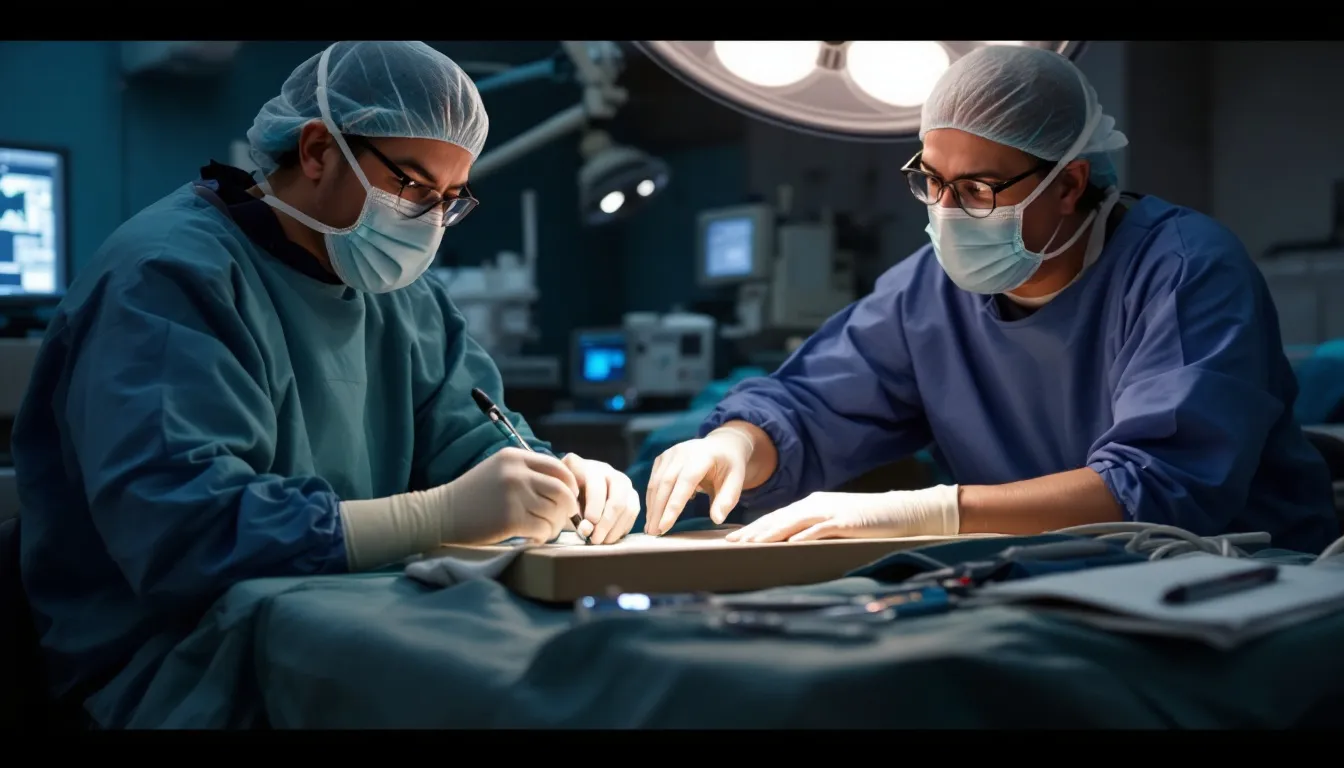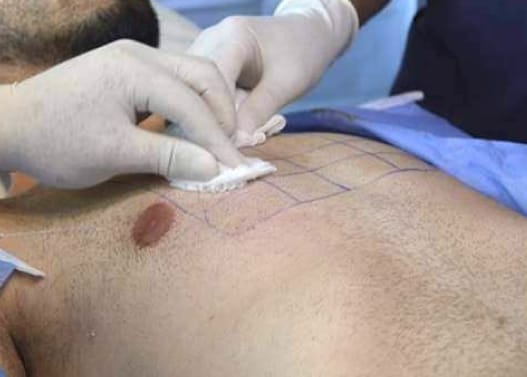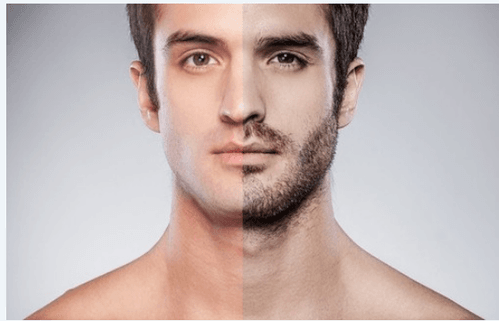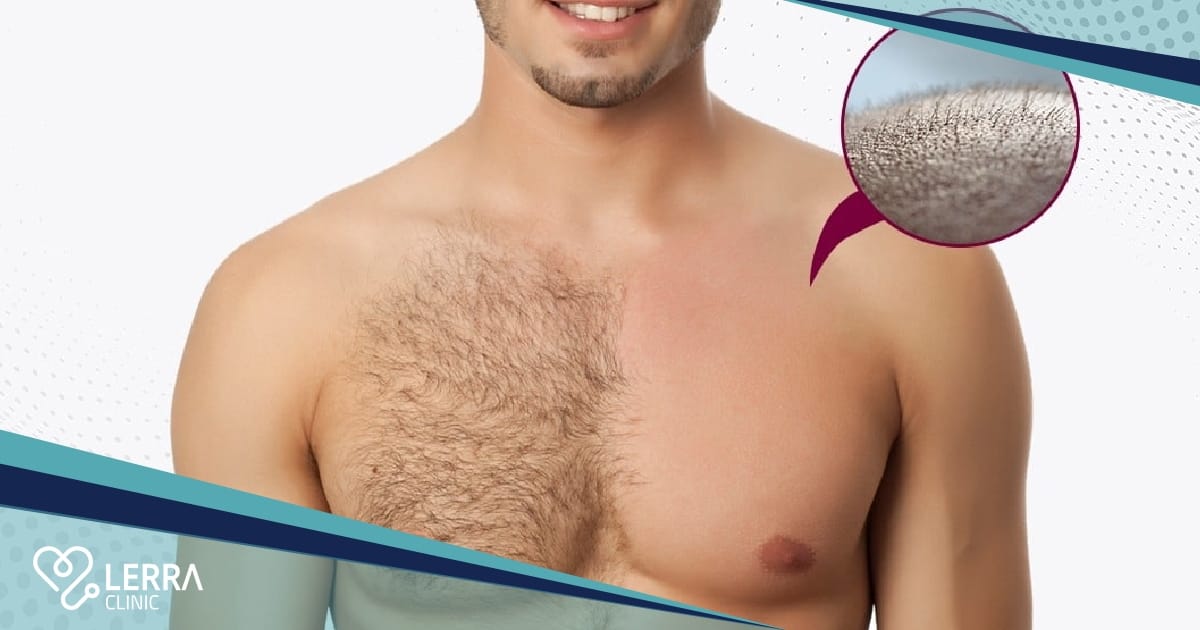Considering a Body Hair Transplant in Turkey? This guide explores why Turkey is a top choice for this procedure, the process involved, and key benefits. Learn what to expect from a Body Hair Transplant Turkey, from skilled surgeons to cost-effective options.
Key Takeaways
- Body hair transplantation uses follicles from various body areas to enhance scalp hair density, making it a viable option for individuals with insufficient scalp donor hair.
- The procedure primarily employs Follicular Unit Extraction (FUE) for its minimally invasive nature, requiring highly skilled surgeons to ensure successful outcomes.
- Turkey’s affordable body hair transplant services, combined with high-quality medical care, make it an attractive destination for hair restoration, with significant cost savings compared to other countries.
Table of Contents
Understanding Body Hair Transplantation

Body hair transplantation is an advanced technique used to enhance hair density and restore confidence by transferring viable hair follicles from various body areas to bald spots on the scalp. Unlike traditional hair transplant methods that primarily utilize hair from the nape of the neck, body hair transplantation employs hair follicles from different parts of the body, thus offering a broader range of donor options. The success of these procedures heavily relies on the quality of body hair, the surgeon’s expertise, and the patient’s goals.
Achieving the best results in body hair transplants depends on skilled surgeons and advanced facilities. Once the grafted follicles are hair transplanted, they are expected to produce new hair growth, contributing to a fuller and more natural-looking head of hair.
Factors such as the texture and growth pattern of body hair compared to scalp hair also play a significant role in the overall outcome.
What is Body Hair Transplantation?
Body hair transplantation is a specialized technique that utilizes hair follicles from areas of the body other than the scalp to enhance hair restoration. This method can also include body hair transplant surgery for those seeking additional options.
This method benefits individuals when the traditional donor area on the scalp lacks enough hair for the desired density.
The body hair transplant procedure involves harvesting hair follicles from various body areas, such as:
- the chest
- beard
- shoulders
- stomach
- arms
- legs
to meet specific transplant needs.
Significantly, body hair differs from scalp hair in several ways, including texture, color, length, and growth rates. Body hairs are often thicker and have a different structure, which makes it an excellent alternative for certain transplant applications. This diversity allows for more flexible and tailored approaches to hair restoration, addressing the unique needs of each patient.
How Does Body Hair Transplantation Work?
The primary method used for harvesting hair follicles in body hair transplantation is Follicular Unit Extraction (FUE). This technique involves extracting individual hair follicles using micropunches, which minimizes scarring by avoiding the need to remove a strip of skin. The FUE method’s minimally invasive nature makes it an ideal choice for body hair transplants, especially given the varying characteristics of hair from different body areas.
Successful body hair extraction requires a highly skilled surgeon due to the complexities involved. The surgeon must account for the different textures and growth patterns of body hair compared to scalp hair. Moreover, ensuring the constant hydration and minimal manipulation of the extracted hair follicles is crucial for maintaining high survival rates and achieving the best possible results.
Ideal Candidates for Body Hair Transplant

Ideal candidates for body hair transplantation often include individuals facing extensive hair loss who lack enough scalp donor hair for effective transplantation. Candidates should have a stable pattern of hair loss, ensuring that the transplanted hair will blend well with the existing hair and provide a natural-looking result.
This procedure is not just limited to men; women can also benefit from body hair transplants, although they may have fewer options due to generally having less body hair. People who have undergone previous hair transplants and have limited donor hairs available at the traditional donor sites may also consider this option.
Body hair transplants serve as an alternative source when traditional hair restoration methods are insufficient, enhancing the overall number of available hair grafts for transplantation.
Who Should Consider a Body Hair Transplant?
Individuals who should consider body hair transplantation typically include those with extensive hair loss or those who have previously undergone unsuccessful hair transplants. These candidates often lack enough scalp donor hair to achieve their desired hair density. Women can also be candidates, although options may be limited due to generally having less body hair.
Body hair transplants are particularly beneficial for those needing additional hair grafts for areas like the crown, where higher hair density is desired. This procedure enhances the total number of available hair grafts, offering a viable solution for individuals facing significant hair loss and limited scalp donor options.
Body Hair Transplant for Severe Baldness
Body hair transplants can effectively address severe baldness by providing additional grafts from the body, especially when traditional donor areas fall short. Individuals at stage 6 or 7 on the Norwood scale often face limitations with traditional hair transplants due to insufficient hair follicles. In such cases, body hair transplants become a necessary alternative to achieve the desired hair density.
Combining body hair transplants with traditional FUE techniques improves overall hair density, providing a comprehensive solution for severe baldness. Harvesting additional grafts from various body parts provides patients with more options to address their hair loss needs effectively.
Torso hair, in particular, is well-suited for transplantation and can help restore hairlines and temple areas with great success.
Donor Areas for Body Hair Transplants
The choice of donor areas for body hair transplants is crucial for achieving natural-looking results. Common donor areas include the chest, back, beard, arms, and legs. Each of these areas provides different types of hair, including vellus hairs and terminal hairs, which are selected based on their similarity to scalp hair in terms of thickness and quality. The best type of hair for body hair transplants is terminal hair, which resembles the characteristics of scalp hair.
Factors influencing the choice of donor area include desired results, the viability of terminal hairs, and the overall quality of the hair. Sometimes, a combination of hair from both body and scalp donor areas is used to optimize the outcome. Choosing the right donor hair sources is essential for achieving the desired density and natural appearance in the transplanted area.
Beard Hair as Donor Source
The beard area is often preferred as a donor source for its thicker and denser hair, which can yield a better graft outcome. Beard hair typically has a diameter greater than 0.08 to 0.1 mm, making it thicker compared to many other hair types. This thickness makes beard hair suitable for transplanting into areas that require thicker hair, such as the crown or mid-scalp.
With an average lifespan of about 4-5 years and a growth rate of 1-1.5 cm per month, beard hair provides long-term results and contributes positively to the final appearance. Up to 3500 grafts can potentially be extracted from the beard, making it a substantial donor site.
Moreover, the survival rate for beard hair used in transplants is an impressive 95%, indicating its reliability as a donor source.
Using Chest Hair for Transplants
Chest hair is another excellent option for enhancing hair density due to its similarity in texture to scalp hair. This texture similarity makes chest hair a favorable choice for transplants, particularly for areas where a natural appearance is crucial. The survival rate for chest hair used in transplants is 76%, which is quite substantial for achieving satisfactory results.
Using chest hair can provide the necessary volume and density needed for effective hair restoration. This option is particularly beneficial for individuals who require additional donor hair to achieve their desired look.
Other Body Parts as Donor Sites
Besides common areas like the chest and beard, body hair transplantation can involve follicles from less common areas such as the legs and arms. However, the survival rate of hair from these areas is often low and unpredictable, making them less ideal compared to other donor sites.
Armpit hair can also be used, though it is not typically the first choice due to similar limitations.
The Body Hair Transplant Procedure

The body hair transplant procedure involves several meticulous steps designed to ensure a successful outcome. The process typically includes preparing the donor area, extracting hair grafts, making incisions on the scalp, and implanting the grafts. Given the complexities and time-consuming nature of extracting body hair, the expertise of the surgeon is paramount in hair transplant procedures.
Combining body hair transplants with traditional FUE techniques enhances overall hair density, providing a comprehensive solution for hair restoration. This approach helps maximize the benefits of both methods, ensuring that patients achieve the best possible results.
Preparing the Donor Area
Preparing the donor area is the first crucial step in the body hair transplant procedure. It begins with applying a topical antiseptic to cleanse the area and marking it for excision. Anesthesia is then administered to numb the donor area and ensure patient comfort during hair extraction.
Methylene blue is used to aid in visualizing hair roots, especially when dealing with white hairs. This preparation is essential for a successful extraction process and minimizes the risk of complications.
Extracting Hair Follicles
The Follicular Unit Extraction (FUE) method involves extracting individual hair follicles with micropunches. This minimally invasive technique causes little to no scarring, making it an ideal choice for body hair transplants. The high survival rates of extracted hair follicles are maintained by ensuring minimal manipulation and constant hydration.
A liposomal solution is frequently utilized to improve the survival rates of extracted grafts. Its application aids in the preservation of these grafts. Additionally, skin tensioning during the graft extraction process is critical to its success. The follicle-sparing technique employed during this process minimizes damage to surrounding tissues, further contributing to the high success rates of the procedure.
Implanting Hair Follicles
The implantation of hair follicles is a delicate step that requires precision and expertise. The surgeon makes tiny incisions on the scalp to create the recipient sites for the hair grafts. These incisions are meticulously placed to align with the natural growth pattern of the patient’s hair, ensuring that the transplanted hair blends seamlessly with the existing hair.
Once the incisions are made, the extracted hair follicles are carefully implanted into these sites. Achieving a natural-looking result with minimal scarring enhances the overall appearance and density of the hair. This step is crucial for the success of the body hair transplant procedure and requires a high level of skill and attention to detail.
Post-Operative Care and Healing
Proper post-operative care is essential for optimal healing and achieving the best results from a body hair transplant. After surgery, patients receive specific guidelines to minimize discomfort and scarring, ensuring a smooth recovery. The use of local anesthesia and intravenous sedation during the procedure helps manage pain, making the experience more comfortable for the patient.
Following immediate and long-term post-op care instructions is crucial. Patients should keep the scalp hydrated, avoid strenuous activities, and attend follow-up appointments to monitor healing progress. Following these guidelines enhances the success of hair restoration surgery and results in a natural appearance.
Immediate Post-Op Care
Immediate post-operative care involves several steps to ensure proper healing. A light gauze dressing is applied immediately after surgery and should be removed after 24 hours. Patients are advised to avoid strenuous activities and keep their scalp hydrated to promote effective healing.
Following these guidelines helps minimize the risk of complications and supports the success of the hair transplant operation.
Long-Term Healing and Results
Long-term healing requires careful attention to maintain the health of the transplanted hair follicles. Patients should use a saline spray to clean the scalp and expedite the healing process. Check-up appointments at three and six months post-surgery are important for monitoring healing progress and addressing any concerns.
The final results of a body hair transplant may take up to 18 months to fully manifest as the hair continues to grow and mature. During this period, it is essential to avoid activities that could strain the scalp and follow the surgeon’s advice to ensure the best possible outcome.
The goal is to achieve natural-looking results with minimal scarring, enhancing the patient’s confidence and appearance.
Benefits and Drawbacks of Body Hair Transplants
Body hair transplants offer several advantages and some potential drawbacks that should be considered. One of the main benefits is the availability of additional donor hair sources, which can enhance graft availability and provide a solution for individuals with extensive hair loss. The affordability and quality of services in Turkey body hair transplant make it an appealing option for many patients.
However, there are also potential drawbacks to consider. Body hair follicles generally have a lower survival rate compared to scalp hair follicles, and the specialized expertise required for body hair transplants can result in higher costs.
Knowing these benefits and drawbacks is vital for making an informed decision about undergoing a body hair transplant.
Advantages of Body Hair Transplants
One of the significant advantages of body hair transplants is the natural appearance they can achieve, particularly in the crown area due to the coarser thickness of body hair. Beard hair, for example, offers longevity and a similar anagen phase to scalp hair, making it a suitable option for transplantation. Thick chest hair can provide density and volume similar to head hair, enhancing the overall result.
Additionally, body hair transplants involve less visible scarring compared to traditional FUT techniques, appealing to many patients. Many patients report significant improvements in confidence and quality of life following their body hair transplant, with a notable enhancement in self-esteem.
Potential Drawbacks
Despite the benefits, body hair transplants come with some potential drawbacks. The lower survival rates of body hair follicles compared to scalp hair can impact the success of the procedure. Additionally, the specialized expertise required for these transplants can result in higher costs, making them more expensive than traditional hair restoration methods.
The extraction process is also more complex and time-consuming, requiring a highly skilled surgeon.
Cost of Body Hair Transplants in Turkey
The cost of body hair transplants in Turkey is one of the factors that make it an attractive destination for hair restoration. The body hair transplant cost typically falls between $2,200 and $5,000, depending on various factors such as the clinic’s reputation, the expertise of the surgeon, and the specific techniques used. Turkey is known for its high-quality medical care and affordable pricing, making it a popular choice for patients from around the world.
Patients from the UK and other countries can achieve significant cost savings due to Turkey’s affordability of body hair transplants. The combination of reasonable pricing and excellent medical services makes Turkey a leading destination for those seeking hair restoration solutions. Lerra clinic offers competitive pricing, enhancing the appeal of choosing Turkey for body hair transplants.
Factors Influencing Cost
Several factors influence the cost of body hair transplants, including the clinic’s reputation, the expertise of the surgeon, and the specific hair restoration technique applied. The technology used in the procedure and the quality of the surgical facility also impact the pricing.
Understanding these factors can help patients make informed decisions about where to undergo their hair transplant procedure.
Comparing Costs Internationally
When comparing costs internationally, patients can save up to 70 percent by choosing to have body hair transplants in Turkey compared to the UK. The significant cost savings, combined with high-quality medical care, make Turkey an attractive option for many seeking hair restoration solutions. The affordability of hair transplant in turkey, compared to other countries, highlights the economic advantages of choosing this destination for hair restoration.
Patients from various parts of the world find Turkey’s combination of affordability and quality medical services appealing. This makes it a top choice for those looking to restore their hair without compromising on the quality of care.
Success Rates and Patient Satisfaction
The success rates of body hair transplants can vary depending on the characteristics and quality of the donor hair. Mixing body hair with scalp hair during transplantation can help achieve a more natural appearance, enhancing the overall results. Overall satisfaction ratings for body hair transplants indicate a positive response from patients, with many expressing contentment regarding the results.
Patients report a satisfaction rate of around 79% with body hair transplants, reflecting the effectiveness and appeal of this procedure. The high satisfaction rate underscores the success of body hair transplants in providing natural-looking results and improving patient confidence.
Graft Survival Rates
Evaluating graft survival rates is crucial for assessing the effectiveness of body hair transplants. Grafts sourced from different body areas exhibit varying survival rates, with beard hair typically having a very high survival rate of about 95%. Grafts from the chest have a survival rate of approximately 76%, while those from the abdomen and thighs show survival rates of around 65% and 70%, respectively.
These differences in graft survival rates highlight the importance of selecting appropriate donor areas for optimal results. Patients should consider these rates when discussing their options with their surgeon to ensure the best possible outcome for their body hair transplant.
Patient Testimonials
Patient testimonials play a crucial role in understanding the real-world outcomes of body hair transplants. Many patients report achieving natural-looking results when the procedure is performed by experienced surgeons, with minimal scarring being a significant advantage.
The overall satisfaction rate of 79% reflects the positive experiences of many individuals who have undergone body hair transplants, highlighting the procedure’s effectiveness and impact on their confidence.
Summary
In summary, body hair transplants offer a viable solution for individuals with extensive hair loss or limited scalp donor hair. By utilizing hair from various body areas, patients can achieve natural-looking results and enhanced hair density. The procedure’s success heavily relies on the quality of the donor hair, the surgeon’s expertise, and the patient’s commitment to post-operative care.
Turkey stands out as a leading destination for body hair transplants, offering affordable and high-quality medical services. With competitive pricing and positive patient testimonials, Turkey provides an attractive option for those seeking to restore their hair and confidence. If you’re considering a body hair transplant, understanding the procedure, costs, and potential outcomes can help you make an informed decision.
Contact us today and get the best offer!
Read Also:
Top 10 Popular Surgeries in 2025: What Patients Are Choosing
How Stars Use Liposuction and Body Sculpting to Stay in Shape
Frequently Asked Questions
What is a body hair transplant?
A body hair transplant involves transferring hair follicles from different body parts, like the chest or beard, to the scalp to address hair loss. This procedure offers an alternative solution for individuals seeking to enhance their hair density.
Who is an ideal candidate for a body hair transplant?
An ideal candidate for a body hair transplant is someone with significant hair loss, insufficient scalp donor hair, or a history of unsuccessful hair transplants. These factors make them suitable for this specialized procedure.
What are the benefits of body hair transplants?
Body hair transplants offer increased donor hair availability and natural-looking results, along with minimal scarring. These benefits can significantly enhance self-esteem and confidence.
How much do body hair transplants cost in Turkey?
Body hair transplants in Turkey usually cost between $2,200 and $5,000, offering a more affordable alternative compared to many other countries.
What is the success rate of body hair transplants?
The success rate of body hair transplants is notably high, with beard hair showing a survival rate of approximately 95% and chest hair around 76%. This indicates that choosing the right donor area can significantly impact the outcome of the procedure.

